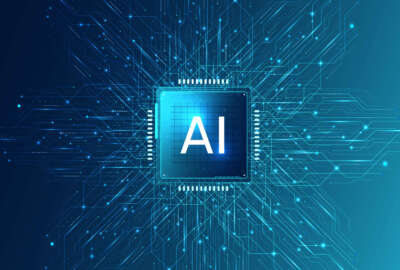Sponsored by Workday and AWS
How the State Department is leaning into AI, modernization efforts to support federal workers
As technology continues to evolve and reshape entire industries and work environments, the federal workforce is no exception.
As technology continues to evolve and reshape entire industries and work environments, the federal workforce is no exception — they must adopt innovative technologies in their focus on global talent management in order to enhance productivity, efficiency, and effectiveness of both the individual employees and the overall agencies.
Don Bauer, chief technology officer for global talent management at the Department of State, said that, in today’s times, “every single thing we do has a nexus with technology.”
“That’s part of my job — not only to make sure that we have technology, but to make sure that the actual technology interacts well with the rest of the technology that we have,” Bauer said.
The Department of State, according to Bauer, supports a global workforce of 278 locations across the world — and, “when it comes to technology and having systems talk to each other, it’s always a challenge when you have to integrate platforms.”
“The biggest challenge in the federal government has been, ‘I don’t want my data going outside into other people’s systems,’” Bauer said on Federal Monthly Insights — Trustworthy AI in the Workforce.
Challenges to modernization
For Bauer, keeping as much corporate IP within the department’s own control, as opposed to putting it into a third-party platform, is ideal “because [platforms] go away, they change. And then you eventually have to take that logic and put it somewhere else.”
Much of modernization efforts happen because they have to, Bauer said. He points to the cyclic nature of his organization — recurring seasonal bidding seasons and performance management cycles, to name a few — as another challenge to accomplishing that.
“HR modernization is somewhat unique in the fact that we don’t get to stop doing our jobs while we’re modernizing,” Bauer said. “We have to continue to fly the plane while we’re working on it, because pay doesn’t stop, promotion doesn’t stop. These cycles continue, and the systems have to support it.”
Leveraging the power of trustworthy AI
Some technologies, like the transformative technology of artificial intelligence (AI), showcase a great deal of promise when it comes to implementing new, effective and efficient solutions for the federal workforce.
AI is already making significant strides in the federal sector. Bauer said the Department of State has already started to implement generative AI internally, with what they currently call “state chat,” where users can upload documents and ask questions related to those documents.
“If I can upload 100 policy documents, and then interactively ask a question about it, that’s powerful,” Bauer told the Federal Drive with Tom Temin. “It brings it to the masses, like you say, I don’t have to be a guru in order to get it. And the beauty of what they’re building right now internally is, every single answer comes a little icon with an eye. You click that eye and it shows you where it got that data.”
The quick and easy ability to identify the source of AI’s answer is key to its trustworthiness and use in the federal workforce, according to Bauer.
“Not only do I want the answer, but I want to know where it came from so that I can make sure that it isn’t a hallucination,” he said.
Embracing modernization in global talent management
To support global talent management, federal agencies are implementing comprehensive talent acquisition and retention strategies. Perhaps just as important, the use of technology to modernize these strategies and processes is helping to streamline recruitment and onboarding efforts.
The integration of advanced technologies and strategic global talent management is transforming the federal workforce. Modernization plays a crucial role in this transformation, keeping federal agencies and their workers poised and ready with the best tools to succeed.
Bauer says connectivity and integration are paramount to building the optimal modern user experience.
“I’m still kind of weaving my way through my legacy platforms,” Bauer said. “So, I call it ‘subsumption’. I’m subsuming a lot of these tools into my current platform, which is ServiceNow as my front end. … I’ve already built all this connectivity, I have integration with my personnel system with my electronic personnel records, all those integrations are built on one platform.”
He explains that he then doesn’t have “all the extra integrations to manage.”
“I don’t have all this extra overhead because every single integration point now is a vulnerability, potentially, and it has to be remediated if there’s security,” Bauer said. “So, this is reducing my footprint while consolidating and giving the modern user experience. So, it’s kind of like, it’s a win-win, but it’s a slow process.”
Copyright © 2024 Federal News Network. All rights reserved. This website is not intended for users located within the European Economic Area.






